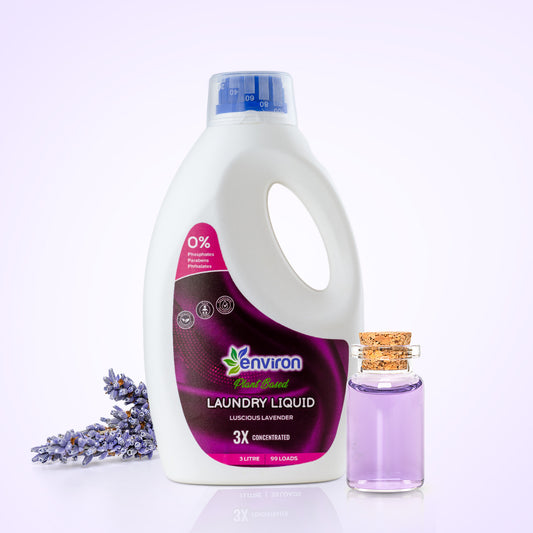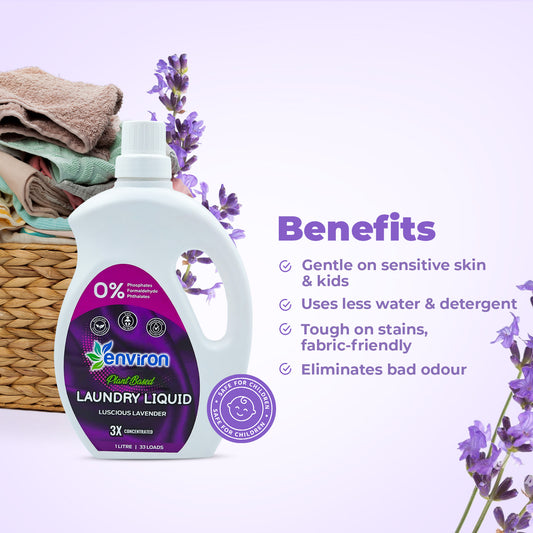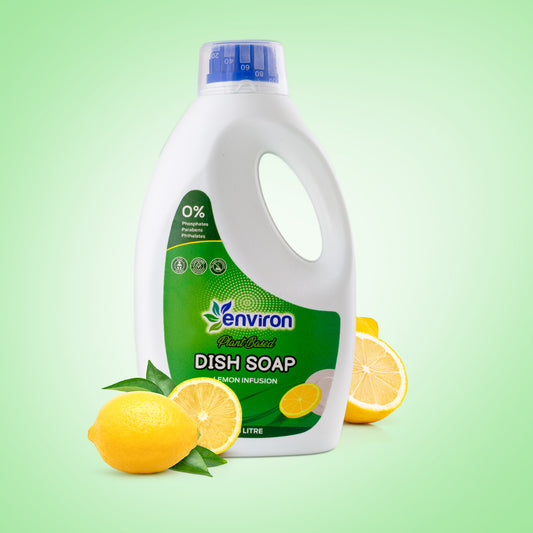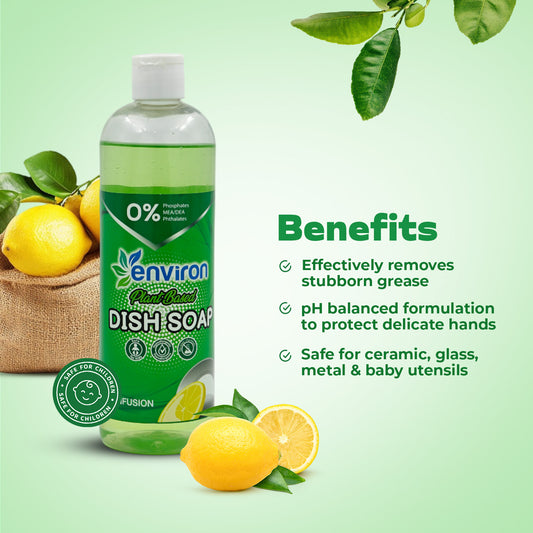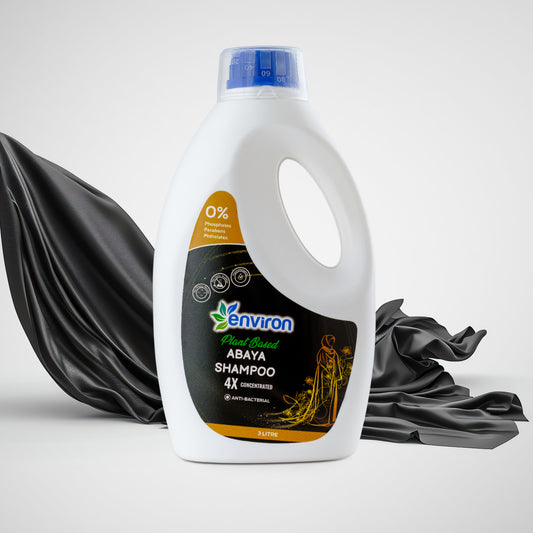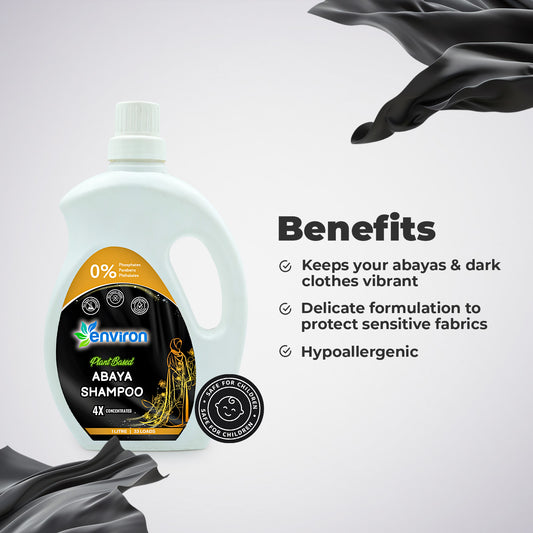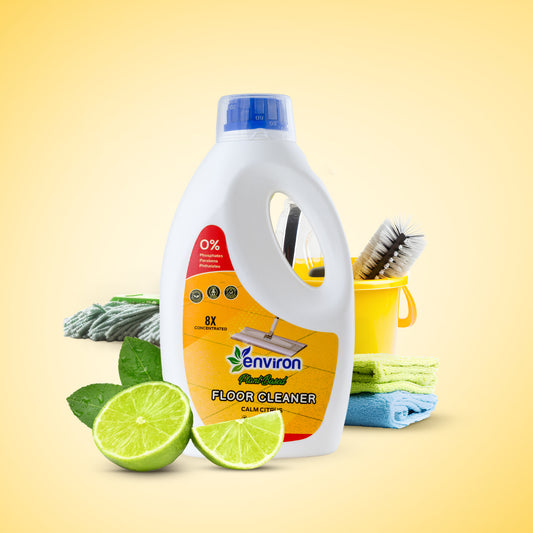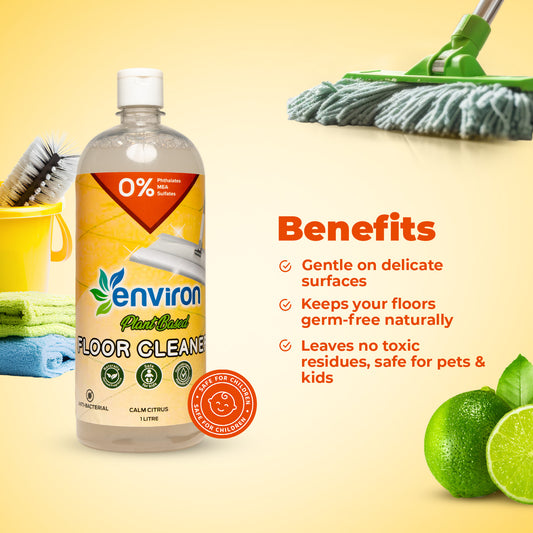Cleaning products such as detergents and liquid hand soap have become ubiquitous in the modern household. These products expose their consumers to various exogenous (non-natural) chemicals every day. Chemicals aren’t inherently bad, and most pose little risk to our health at our levels of exposure, given the recommended usage patterns followed. However, research points to a troubling presence of a specific category of chemicals in cleaning products that are associated with issues with human fertility and our hormonal system.
Endocrine Disrupting Chemicals (EDCs) are synthetic chemicals – found in plastics, fragrances, personal care products, and more – that can cause disturbances in the endocrine system. EDCs disrupt the delicate balance of the endocrine system by mimicking, altering the production of, or outright blocking hormones.
EDCs pose serious health risks to consumers. Studies link EDCs to type 2 diabetes, obesity, neurobehavioral problems, and issues with thyroid functions. Alarmingly, some EDCs can even damage reproductive health by affecting male and female sex hormones. While many EDCs (DDT, PCB) have been banned in many countries, there are shocking amounts of EDC exposure in our lives to this day.
Common types of EDCs are parabens, phthalates, Bisphenol A (BPA), and triclosan. These are found in several household products such as plastic bottles, cosmetics, lotions, certain fabrics, and even the food we eat, which accumulate EDCs from industrial chemicals and pesticides. As per the Endocrine Society, the main routes of exposure for EDCs are through skin (contact and application), contaminated food, and inhalation of vapors and fragrances.
EDCs in Cleaning Products
Ultimately, commonly used cleaning chemicals such as dishwashing liquid, detergents and products with fragrances are immense sources of EDC exposure in modern lifestyle. EDCs in cleaning products enter our body through inhaling vapors and application on the skin. With how widespread the use of these exogenous chemicals has become, there is serious reason to be concerned about the reproductive health of our future generations.
Detergents, toilet cleaners, and handwashes are known to contain numerous different toxic chemicals, many of whom are EDCs. EDCs in our everyday cleaning products can be divided into four major categories:

1. Synthetic fragrances
Synthetic fragrances - commonly found in cleaning products such as laundry detergents - often employ chemicals derived from phthalates to carry fragrances and to aid in lubrication. However, this chemical has been linked to harm to reproductive systems, organs, and our endocrine system, especially in males.
Phthalates, among other chemicals often used in artificial fragrances, help fragrances persist longer and not disperse quickly, like in nature. As such, these ingredients are intended to stick to fabrics and are often broken down and absorbed into our skin. Phthalate exposure is significantly associated with infertility. These phthalates can trigger “death-inducing signaling” in testicular cells, resulting in reproductive defects in males such as abnormal genital development and worse semen quality. Phthalates pose a serious risk to consumers, especially young families. More troublingly, manufacturers of cleaning chemicals aren’t required to list the individual ingredients of artificial scents. As such, you may be exposing yourself to harmful chemicals such as phthalates without even knowing so.
Also Read - How to Find the Best Non-Toxic, Plant-Based Detergent
2. Solvents
Chemical solvents used in cleaning products are harmful to fertility. A group of organic solvents known as Glycol Ethers, including 2-methoxyethanol and 2-butoxyethanol, are used in a wide range of cleaning agents, paints, and personal care products. Useful for either their hydrophobic or hydrophilic properties, glycol ethers have been associated with sperm infertility, damage to neurocognitive abilities in unborn children, and embryo-fetal toxicity through maternal exposure. Glycol ethers have been associated with reproductive damage in laboratory animals and effort has been made to link them to impaired reproductive function in human women.
Furthermore, the preparation of glycol ethers through a process known as ethoxylation yields a by-product known as 1,4-Dioxane, a chemical currently being evaluated for its endocrine disruptive properties. More importantly, 1,4-Dioxane is classified as a probable carcinogenic. We have even observed tumor development in animals through oral exposure.
Suffice it to say, that glycol ethers’ harm to our fertility and health is well-known. Regardless, much is left in the way of studying the chronic effects of low-dosage exposure to glycol ethers.
3. Preservatives
Parabens are synthetic chemicals used as preservatives in synthetic detergents, cleaners, and even personal care products. Parabens can very easily enter the human body through inhalation and ingestion. Disturbingly, they can even be absorbed through the skin. As such, it is alarming that parabens induce endocrine disruption. Parabens have been linked to enhanced estrogen action, a decrease in fertility, reproductive defects, adverse birth outcomes, and even an increase in the risk of cancer.
Suffice it to say, that the potential harms of paraben to our endocrine and reproductive systems far outweigh the benefits gleaned from their antifungal and antibacterial properties. Fortunately, recent studies have reinforced that essential oils and plant extracts present the antimicrobial potential to replace parabens.
4. Anti-Bacterial
Sanitation products such as liquid hand-washed pride themselves on germ removal. Many use a chemical known as triclosan for its anti-bacterial properties. Unfortunately, triclosan is a known endocrine disruptor. Triclosan can interfere with both the male and female sex hormones, androgen and estrogen. Exposure to triclosan must also be avoided during pregnancies as the chemical can cross the placenta enter breast milk, and potentially pose harm to babies. Additionally, it is linked to interfering with thyroid functions, possibly increasing the risk of cancer and allergies. Besides disrupting our endocrine system, long-term use of triclosan may even make bacteria more resistant to antibiotics.
However, the worst part of triclosan is that it may not even help in reducing the risk of infection. According to the FDA, washing hands with regular soap and water is just as effective as any handwash containing triclosan.
Even though the use of triclosan is well-regulated in places like the European Union, the long-term effects of the chemical on human health are still uncertain. With no obvious benefit to the chemical, it would be prudent to be wary of cleaning chemicals boasting their “99.99% anti-bacterial resistance”. Fortunately, there are handwash liquid that have perfectly effective anti-bacterial properties without employing the use of triclosan. As triclosan must be identified in the ingredient list, it is imperative to check any anti-bacterial handwash for this potentially dangerous chemical.
Order chemical-free cleaning products at affordable prices
We live in a time of change in the chemical industry. Knowledge of the danger posed by synthetic chemicals in our everyday lives is becoming more widespread. Many potential EDCs are identified and classified regularly. Unfortunately, there is a need for long-term studies of the effects of these EDCs in human bodies, even at lower concentrations. Many regulatory bodies need to catch up in identifying, regulating, and eliminating harmful EDCs. To protect our and our children's health, we must take care of the chemicals we put in our environment, including our air, skin, surfaces, and food.


